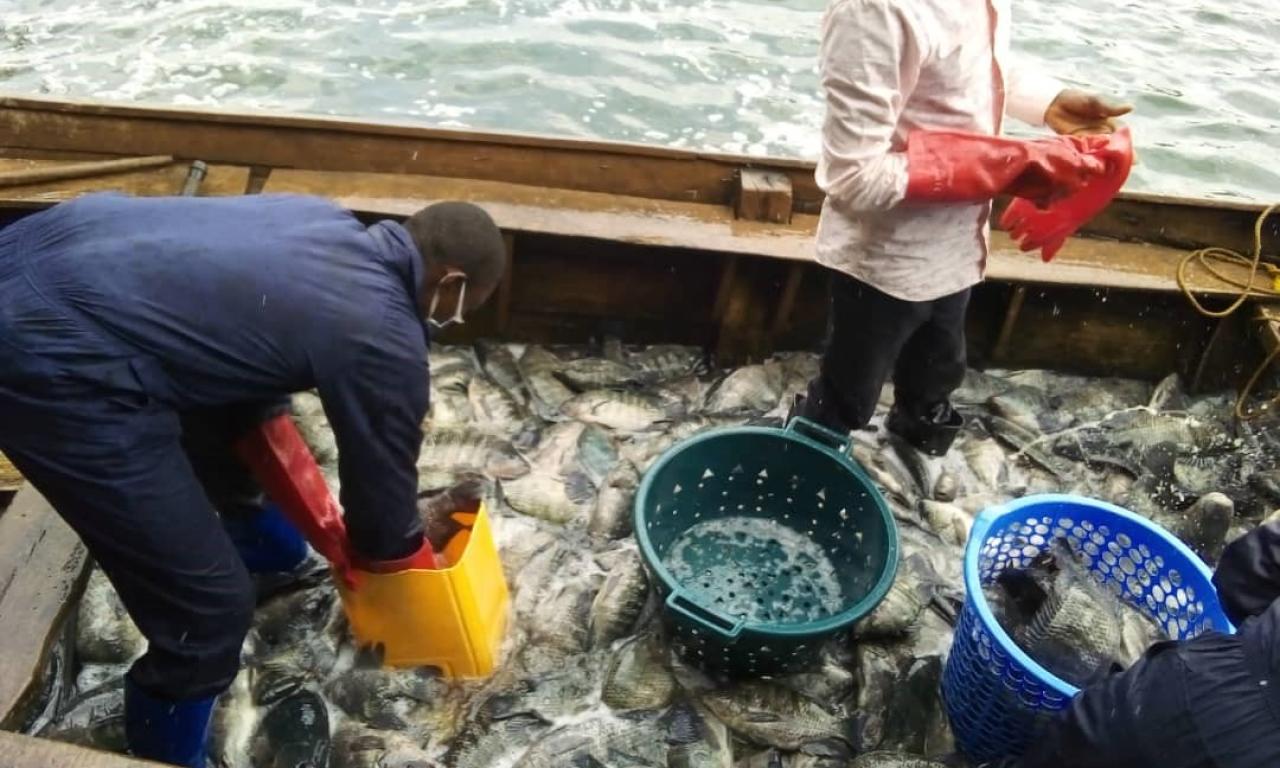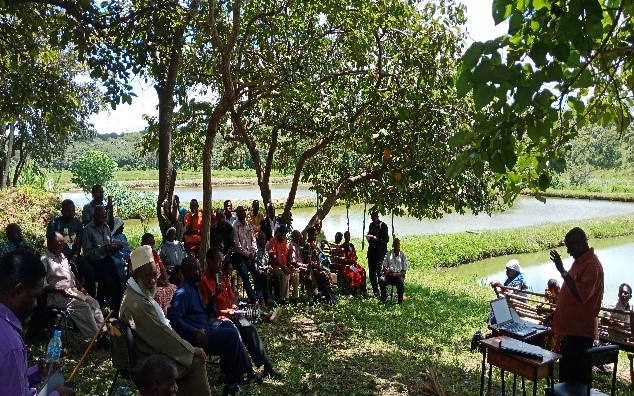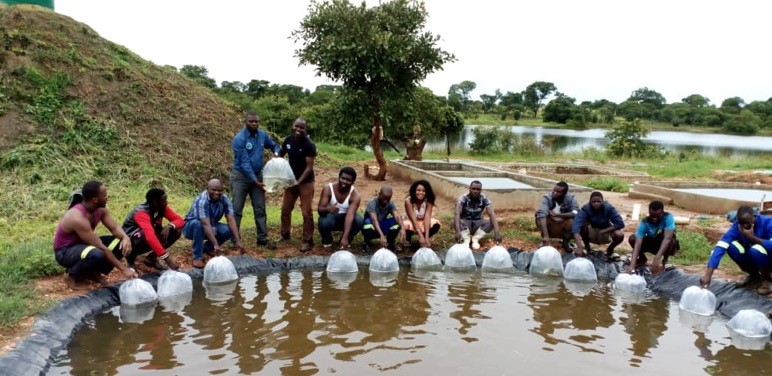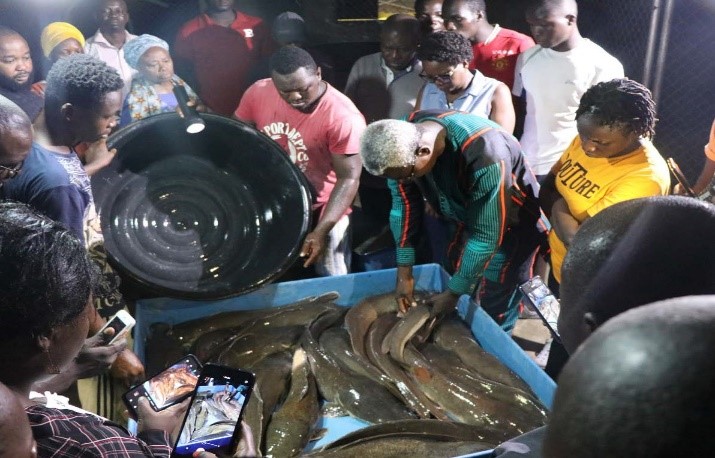
- Youth form the largest segment of the population in Africa and the world at large.
- Empowering youth to take the lead in elevating the aquaculture sector to greater heights has great potential in contributing toward breaking the persistent cycle of poverty, especially in developing countries.
- Through livelihood education, youth can enhance their employability, obtain sustainable livelihoods and stimulate entrepreneurial activity.
Youth form the largest segment of the population in Africa and the world at large. They are major stakeholders in driving a nation’s economy. Despite this, Africa is home to some countries with the highest poverty levels. This calls for more effort from both the public and private sectors in order to promote their involvement in meaningful investments that will aid the eradication of poverty.
Empowering youth to take the lead in elevating the aquaculture sector to greater heights has great potential in contributing toward breaking the persistent cycle of poverty, especially in developing countries. In principle, youth are already playing a critical role in building a more conducive environment in which they are able to thrive. However, they need support to help them advance their skills to achieve this.
WorldFish, through Aquaculture Compact – one of the nine commodity compacts of the Technologies for Africa Agriculture Transformation (TAAT) program, is including budding young entrepreneurs in efforts to sustain the aquaculture sector through outreach programs, technology and innovation dissemination, capacity building and efficient project management.
Aquaculture Compact has collaborated with the National Agricultural Research Systems (NARS) in 12 countries in the central (Burundi, Cameroon and the Democratic Republic of Congo), eastern (Kenya and Tanzania), southern (Malawi and Zambia) and western (Benin, Côte d'Ivoire, Ghana, Nigeria and Togo) regions of Africa.
Improving production through capacity-building efforts in new technologies

Aquaculture technologies and innovations were disseminated and scaled through the private sector and innovation platforms (IPs) of participating countries. WorldFish further contributed to improving the competence and skills enhancement of aquatic food actors in terms of aquaculture technologies and better management practices (BMPs) in beneficiary countries.
In terms of the dissemination of technologies and innovation, the mass production of mono-sex tilapia and catfish fingerlings in hapas increased the survival rate of fingerlings production to 90 percent. Also, the production of mono-sex male tilapia increased the average weight of fish from 200 grams to 500 grams after a 5-month production cycle, while catfish increased from 500 grams to 1 kilogram on average.
The use of quality low-cost aquatic feeds produced using locally available raw materials reduced production costs by 30 percent when compared to the sole use of costly imported aquatic feeds. Apart from that, the use of improved solar tent driers produced high-quality sand-free aquatic food products. Smoking kiln technology adopted by aquatic food processors reduced their exposure to direct fire and levels of polyaromatic hydrocarbons (PAH) in the value-added aquatic food products, which are accepted in international markets.
Improving accessibility to quality seed

In response to calls to improve the accessibility of aquatic food producers to quality seed, over 176 million fingerlings have been produced for dissemination to small and medium enterprises (SMEs) with the establishment of 92 demonstration centers. The project supported the upgrading of demonstration facilities as well as the supply of operational inputs for the private sector in the various centers.
More than 23,000 aquaculture value chain actors (AVCAs) have received capacity-building training including staff of the National Agriculture Research Extension Services (NARES). Through outreach programs, demonstrations and IPs, over 323,492 beneficiary households among the AVCAs and other stakeholder groups have been reached.
The IPs have enhanced the quality of interactions, relationships, confidence, trust and entrepreneurship among AVCAs. This is shaping business opportunities and influencing local decision-making processes, including policy and institutional change.
Contributing to the Sustainable Development Goals

The 2030 Sustainable Development Goals (SDGs) envision the youth as a driving force for development – but only if they are provided with the skills and opportunities needed to reach their potential.
The current unemployment situation, especially for youth, is at a critical stage. Youth belong to the category with the highest unemployment rate in the labor market. A lack of relevant skills and the absence of access to appropriate financial services for entrepreneurs are two common barriers to youth employment.
Through livelihood education, youth can enhance their employability, obtain sustainable livelihoods and stimulate entrepreneurial activity. WorldFish is taking a responsive approach toward nurturing the youth as the next generation of entrepreneurs by providing them with skills, knowledge and confidence in their abilities and harnessing their potential to positively contribute to meaningful development for now and the future.

